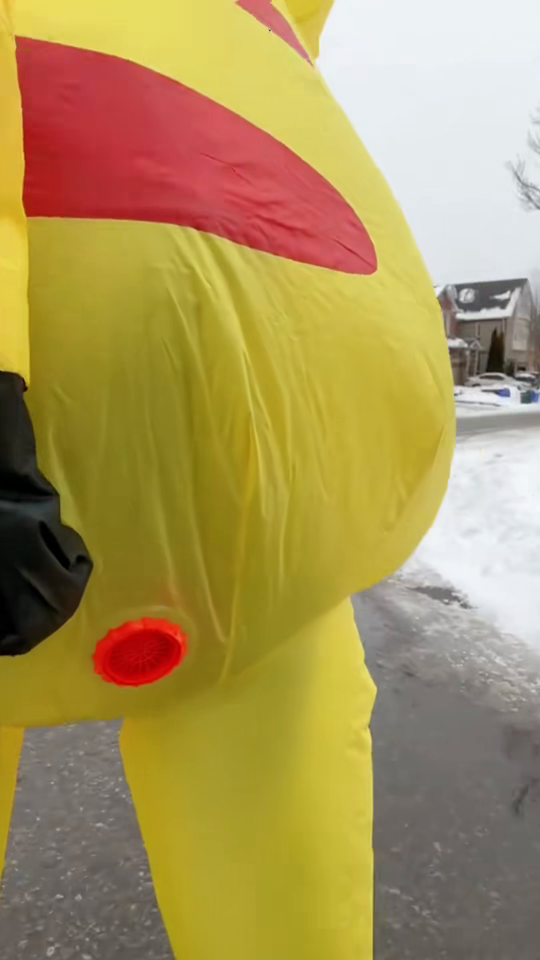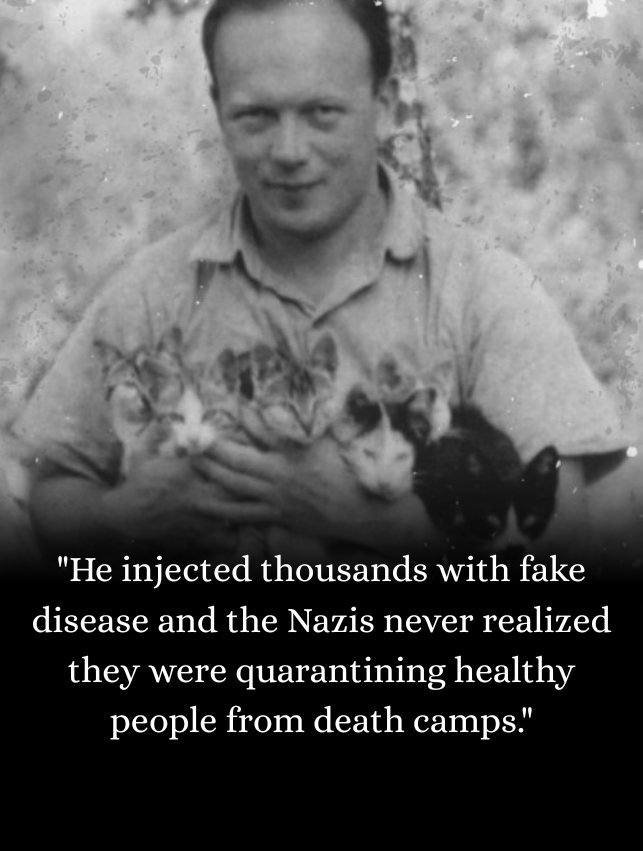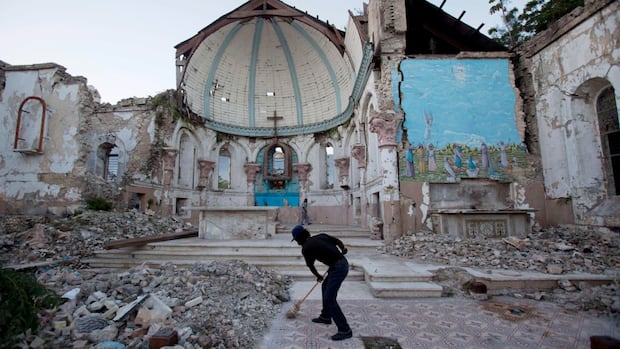He injected thousands with fake disease—and the Nazis never realized they were quarantining healthy people from death camps.
Poland, 1941. The Nazi occupation had transformed the country into a landscape of terror. Jews rounded up and herded into ghettos before deportation to camps. Polish intellectuals executed. Resisters tortured. Every day brought new horrors, new disappearances, new reasons to fear.
In the small town of Rozwadów, 28-year-old Dr. Eugeniusz Lazowski treated patients under impossible conditions—scarce supplies, almost no medicine, constant German surveillance. He'd already watched friends executed, Jewish neighbors deported, families destroyed.
Then a desperate Jewish friend came to him: the Nazis were planning to liquidate his village. Was there any way to avoid deportation?
Lazowski considered what terrified even the ruthless SS. They seemed fearless in their brutality, unstoppable in their cruelty. But there was one thing that made them hesitate: epidemic disease.
The Germans were paranoid about typhus—a bacterial infection spread by lice that killed quickly and spread rapidly through crowded conditions. During World War I, typhus had killed millions. Nazi command had strict protocols: quarantine infected areas, avoid all contact, let no one in or out.
Lazowski had an idea. Crazy, dangerous, brilliant.
What if he could fake a typhus outbreak?
He contacted his friend Dr. Stanisław Matulewicz, who had been studying the Weil-Felix test—the standard diagnostic for typhus. The test detected antibodies the body produced responding to typhus bacteria.
But Matulewicz had discovered something remarkable: a completely harmless bacteria called Proteus OX19 triggered the exact same antibody response.
Inject someone with dead Proteus OX19 bacteria, and they would test positive for typhus—while being perfectly healthy.
The two doctors looked at each other. This could work. This could save lives.
This could also get them killed.
They started small. Late 1941, Lazowski injected a few Polish patients with the dead bacteria. Within days, when tested by German medical authorities, they showed positive for typhus.
The Germans immediately quarantined the area around Rozwadów.
It worked.
The Germans, terrified of outbreak, declared the region infected and prohibited their soldiers from entering. No German doctors examined patients personally—they simply trusted test results and stayed away.
No deportations occurred in quarantined zones.
Lazowski and Matulewicz realized they'd found a weapon.
For the next three years, they ran a secret operation. When word spread that Nazis were planning deportation in a nearby village, someone would get word to Lazowski. He'd travel there, often at night, with vials of harmless bacteria hidden in his medical bag.
He'd inject dozens, sometimes hundreds—Jews hiding in villages, Polish families at risk, anyone needing protection. Within a week, German medical teams would test the population, find widespread "typhus," and declare quarantine.
Germans would mark the area on maps with red circles and stay away.
To maintain the illusion, Lazowski had to be strategic. He couldn't create too many outbreaks or patterns would look suspicious. He had to spread "infections" realistically—concentrating them in specific villages, creating apparent "transmission chains" following normal disease patterns.
He forged medical records showing disease progression. He trained local nurses how to describe typhus symptoms to German inspectors. He created fake patient histories.
It was elaborate performance art that had to be perfect every single time—because one mistake meant death.
The risks were enormous. If Germans discovered the deception, Lazowski and Matulewicz would be executed immediately, along with their families and probably everyone they'd "infected." If a German doctor actually examined a "typhus patient" closely, healthy appearance would expose the ruse.
But the Germans' own paranoia protected the scheme. They were so terrified of typhus they avoided close contact with infected areas. They accepted test results from distance and stayed away.
For three years, Lazowski and Matulewicz maintained the phantom epidemic. Villages around Rozwadów and in the Łańcut region became known as typhus zones—areas Nazis marked on maps but never entered.
Approximately 8,000 people—Jews and Poles—lived in these "infected" areas, protected by disease that didn't exist.
Some people lived in quarantine zones for years, working farms, raising children, living relatively normal lives while surrounded by war that should have killed them. They'd watch German patrols stop at village boundaries, check maps, and turn around.
The invisible disease was their shield.
By 1944, the Soviet army advanced from the east. Germans began retreating from Poland.
The fake epidemic had lasted just long enough.
After the war, Lazowski and Matulewicz said nothing about what they'd done. It was too dangerous—Poland was now under Soviet control, and Communists were suspicious of anyone who'd survived through cleverness rather than joining partisans. Drawing attention could lead to collaboration accusations.
Lazowski emigrated to the United States in 1958, settling in Chicago and working as a doctor. For decades, he never spoke about the fake typhus epidemic.
Not until the 1970s did the story begin emerging. A researcher interviewing Holocaust survivors heard whispers about "the doctor who created the disease that saved us." Eventually, the trail led to Lazowski, who was finally convinced to tell what happened.
He was in his sixties then, a quiet man working at a hospital, taking the bus to work, living an unremarkable American life. When he finally explained what he'd done during the war, people could barely believe it.
He'd saved thousands using nothing but fake disease, clever science, and extraordinary courage.
In 2000, Lazowski was nominated for the Nobel Peace Prize. He received Israel's Righteous Among the Nations honor. Medical schools began teaching his story as example of ethical courage.
When asked about his actions, Lazowski was characteristically modest: "I didn't do anything special. I just did what I could with what I had."
What he had was medical knowledge and moral courage.
What he did was save 8,000 lives.
Think about the audacity of this plan. Lazowski wasn't creating real resistance infrastructure—no weapons, no safe houses, no escape routes. He was creating an illusion so convincing that the Nazis themselves enforced the protection.
He turned German paranoia into a weapon against them. Their fear of disease became a shield for those they wanted to murder.
It required understanding your enemy's psychology. The Nazis were brutal but not stupid—they'd see through crude deceptions. The fake epidemic had to be believable: realistic spread patterns, proper medical documentation, trained people who could describe symptoms convincingly.
It required nerves of steel. Every injection, every forged document, every trained nurse was a risk. One nervous mistake, one suspicious German doctor, one person who talked—and the entire scheme would collapse, killing everyone involved.
And it required sustained courage over years. Not one heroic moment, but three years of constant danger, constant deception, constant fear of discovery.
Lazowski didn't just save lives once. He saved them continuously, day after day, injection after injection, forged document after forged document, maintained lie after maintained lie.
For three years.
The people living in those quarantine zones knew they were healthy. They knew the disease was fake. They understood they were part of an elaborate deception that kept them alive.
Imagine living that way: appearing sick to Germans while living normal lives when they weren't watching. Teaching children to cough convincingly if Germans approached. Maintaining the performance constantly because dropping it meant death.
Entire communities participated in sustained theater where the stage was their village and the audience was an army that would kill them if the performance failed.
And it never failed. For three years.
Dr. Eugeniusz Lazowski died in 2006 at age 92, in Eugene, Oregon (he'd moved there and coincidentally lived in a town with the American version of his name—Eugene/Eugeniusz).
His obituary appeared in major newspapers worldwide, finally giving him recognition that had eluded him for sixty years.
Today, his story is taught in medical schools as example of how doctors can use knowledge to resist tyranny. It's cited in discussions of medical ethics, creative problem-solving, and moral courage.
Because Dr. Lazowski proved something important: you don't need an army to fight evil. Sometimes all you need is a vial of harmless bacteria, clever understanding of your enemy's fears, and courage to risk everything.
He weaponized science against tyranny.
He turned a diagnostic test into a shield.
He created disease to cure injustice.
And 8,000 people lived because of it.
Their children lived. Their grandchildren live today. Entire family trees exist because one doctor realized that sometimes the best way to fight evil isn't confrontation—it's deception so brilliant your enemy enforces your protection while thinking they're protecting themselves.
The Nazis thought they were avoiding typhus.
They were actually avoiding justice for their intended victims.
And they never realized the disease they feared didn't exist.
That might be the most satisfying part of this story: the Nazis were completely fooled. Their own paranoia, their own protocols, their own fear—all turned against them by one doctor with a vial of harmless bacteria.
Dr. Lazowski didn't overpower evil. He outsmarted it.
And 8,000 people—and their tens of thousands of descendants—exist because he did. ...read more

cbc
i hope everyone can have a good sunday bunday and relax ☀️ 💛
Tonight's Streamer Links
jamesfromtheinternet twitch
jason_society twitch
justinfreakin twitch
talorxlive twitch
featuring
girlilly twitch
mrmumbles710 twitch
unicornexhaust twitch
Chat
carlaswildride twitch
globus_the_elder twitch
ho77iday twitch
Krisanthimum twitch
lenny_1058 twitch
mxmattyb twitch
parkorselanguage twitch
peevil twitch
theferretking twitch
FREEMZ? twitch ...read more
i thinks that should be a crime...


Good morning
Autumn farm market
#fall
#autumn
#photography
#october
#market
#store
#stand
#house
#beautiful
#scene
#maine
...read more
Scarface- It Ain't (Part II) (Instrumental) Prod. By Erick Sermon
Just happening now @ walker rd & north talbot


youtube






